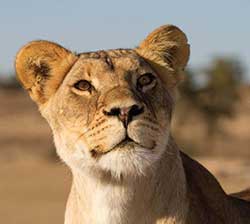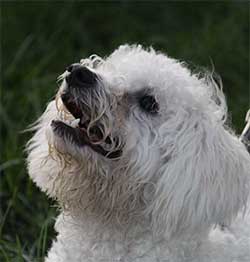This is part 2 of a two-part blog. Read Part 1 here.
At this point, I felt I had a good concept of the nature of animals, but I hadn’t yet fully explored what the readings had to say about life after death for our animal friends.
As it turns out, I found Cayce’s answer in a group of readings given to several family members from February to September, 1933. Belonging to the family’s aunt and uncle was a little dog named Mona. Mona must have had quite a personality, because she was asked about in four of the readings given to this family over that eight-month period.
The first reading in which she is mentioned is for the 44-year-old aunt. The woman asked where and how she had been formerly associated with her husband, her brother, her niece, and then … there it was, “My little dog, Mona?”
To which Cayce responded that she was associated with Mona during a Roman experience. This Protestant woman, in 1933, for reasons perhaps known only to her, and for which I am very grateful, went on to ask, “Was she a dog then?” Cayce’s reply was emphatic, “A lion!” (Edgar Cayce Reading 268-3)

It didn’t stop there. This reading was followed a week later by a reading for the woman’s husband. In his reading, these questions were asked and answered:
(Q) What relation is he to the little dog Mona?
(A) He fought with the body in the Roman experience.
(Q) What was Mona then?
(A) The lioness that fought with the entity, and with those that destroyed many that the entity was then seeking to aid.”
-- Edgar Cayce reading 280-1
Can you imagine this lioness trying to find expression in their home as a small domestic dog? This Mona must have been one tough little dog! Perhaps as tough as my Izzy!

Next we have a reading for the woman’s 11-year-old niece. This reading was given seven months after Mona is first mentioned in the readings, and the question was asked:
(Q) Will Mona always be a dog?
Cayce’s reply was:
(A) That depends upon the environ and the surroundings. No.
-- Edgar Cayce reading 405-1
In other words, as tough as that lioness may have been during this family’s Roman experience, if she wanted to be a companion to this family again, coming back as a lion obviously was not an option. Due to the family’s current times and living environment, she instead became Mona, a spirited little dog.
The last reading that mentions Mona is perhaps the most interesting one. It was given for the woman’s 14-year-old nephew. In his reading, the question is asked,
(Q) Could a Life Reading be obtained through these sources for Aunt [268]'s little dog Mona?
(A) May be. As to WHAT it may be is different! It may not be understood, unless you learn dog language!
-- Edgar Cayce reading 406-1
This is a great example of Cayce’s humor in the readings, but I also think he was quite serious about that answer!
 According to these readings, the lives of animals do continue after death. They also reincarnate, and it appears that, like us, they may stay with certain soul groups. Just as I can imagine human souls hovering over parents, deciding upon their “re-entry,” looking for that opportunity to once again bring spirit into the earth, I now have an image of our animals doing the same thing.
According to these readings, the lives of animals do continue after death. They also reincarnate, and it appears that, like us, they may stay with certain soul groups. Just as I can imagine human souls hovering over parents, deciding upon their “re-entry,” looking for that opportunity to once again bring spirit into the earth, I now have an image of our animals doing the same thing.
Excerpt from an article published in the Jan-Mar 2014 issue of Venture Inward magazine. A.R.E. members can read the entire article in the online member section at EdgarCayce.org/members.






